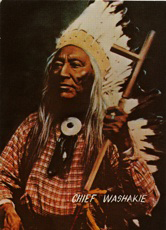|
|
|
|
Early Peoples: The Northwestern Band of Shoshone
|
 The Northwestern Band of the Shoshone is part of the Numic speaking peoples of the Uto-Aztecan language family. The Northwestern Shoshone dialect, Shoshonish Genus, or Central Numic, began to form in about 500 A.D., when small family groups moved into northern Utah and southern Idaho. The Central Numic (Shoshone) peoples either displaced or absorbed the preexisting Fremont culture and became the dominant group in the area by 1,000 A.D. Traveling in small family groups, the Northwestern Shoshones developed a culture and way of life that changed with the seasons. They gathered seeds, plants, and herbs and hunted small game. Groups came together in larger encampments at different times to trade, socialize, and sometimes for protection against enemies. Around 1600, the Northwestern Shoshones acquired the horse through trade and began to adopt traits of the Plains Indians. They became noted warriors and hunters and were able to travel more quickly and farther than before. With easier access to food like buffalo, the Northwestern Shoshones began to live in larger communities. The Northwestern Band of the Shoshone is part of the Numic speaking peoples of the Uto-Aztecan language family. The Northwestern Shoshone dialect, Shoshonish Genus, or Central Numic, began to form in about 500 A.D., when small family groups moved into northern Utah and southern Idaho. The Central Numic (Shoshone) peoples either displaced or absorbed the preexisting Fremont culture and became the dominant group in the area by 1,000 A.D. Traveling in small family groups, the Northwestern Shoshones developed a culture and way of life that changed with the seasons. They gathered seeds, plants, and herbs and hunted small game. Groups came together in larger encampments at different times to trade, socialize, and sometimes for protection against enemies. Around 1600, the Northwestern Shoshones acquired the horse through trade and began to adopt traits of the Plains Indians. They became noted warriors and hunters and were able to travel more quickly and farther than before. With easier access to food like buffalo, the Northwestern Shoshones began to live in larger communities.
|
|
|
|
|
|
